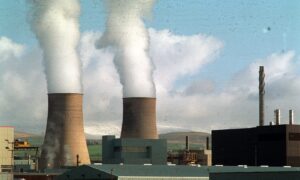Engineering as we know it had its origins in the Age of Enlightenment that dominated the world of ideas in Europe in the 17th and 18th centuries when science played an important role as pragmatism, logic and rational thinking replaced the authority of tradition and religion.
Combined with enlightenment ideals of advancement and progress, this directly led to the industrial revolution, modernism, and development of the engineering (and underlying scientific) principles which remain foundational to engineering design even to this day.
As we stand on the dawn of a new revolution – the green industrial revolution – once again we need to apply engineering principles and approaches to enable us to make this mammoth shift in the way our society works, plays and progresses.
Politicians, and society at large, tend to present net zero delivery in terms of making strategic choices between rival technologies – whether battery vs hydrogen fuel cell electric vehicles or hydrogen boilers vs heat pumps.
Individual engineers often do this too, but successfully engineering net zero will require looking holistically at all energy systems using measured Systems Thinking, Systems Engineering and a Whole Systems approach. This will involve identifying and managing risks, uncertainties and opportunities to make appropriate, evidence-based decisions as the suite of available solutions is refined and matured to meet the targets and objectives.
The application of engineering
Engineering activity is usually applied to the delivery of specific outcomes or products in accordance with a business case or specification. Achieving the goal of a net zero energy system by 2050 is complex and clearly cannot be considered as a single project. The specification here is to achieve net zero emissions, but the way that is achieved will be through a variety of smaller, discrete projects, combining to achieve the end goal.
The application of engineering is the normal means by which society ensures it achieves desired outcomes. When the challenges we face are as complex and novel as net zero, we need the support and leadership of engineers to take a holistic view of the challenge in a co-ordinated effort of all sections of industry and society.
In engineering terms, all projects follow a life cycle that involve aspects such as concept screening, feasibility, front end engineering design (FEED), detailed design, construction, commissioning, operations & maintenance and finally decommissioning.
While it can be possible to omit some of the interim steps, once technology applications have become well established and understood, greater rigour is required for novel and/or bespoke project concepts.
Development of a net zero energy system on the scale required by the UK has never been done before anywhere in the world; while some elements might increasingly be more understood, no-one to date has effectively combined them all together.
The development of bespoke, novel and safety critical projects and programmes has historically been prevalent in the process, petrochemical and oil and gas sectors. They therefore provide the most appropriate engineering development framework(s) to provide rigour and structure to engineering the delivery of a net zero energy system.
A key example is the capital value process (CVP) which is particularly used in the oil and gas sector to provide a basis for decision making and governance (rather than project management) when developing major capital projects. CVP was developed within bp, with variations on the concept having since been adopted throughout these industries.
A core element of CVP is definition of the proposed project lifecycle development stages: defined by bp as Appraise, Select, Define, Execute and Operate. CVP also defines the main activities and intended outcomes to be achieved to progress through the gateway at the end of each stage onto the next project phase.
Joining the dots
While the oil and gas majors have developed their own in-house engineering standards to support CVP delivery, other bodies such as The Association for the Advancement of Cost Engineering provide guidelines for cost estimation and Estimate Class definitions with associated end use, methodology and expected accuracy ranges which are generally used to support project definition and development throughout the industry.
Despite society’s tendency to focus on individual technologies, engineers can take the big picture view required to solve the net zero crisis. They are the very people who understand the current energy systems, the vision of what a viable future energy system would look like, and the technical skills and processes to get us there.
The systems thinking approach will be essential in order to have this macro system view. It will also dictate the expertise needed in the shape of a systems integrator responsible for bringing together the supply chain partners and key stakeholders at the various stages of design, development and deployment.
Recommended for you









